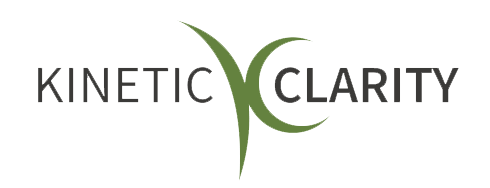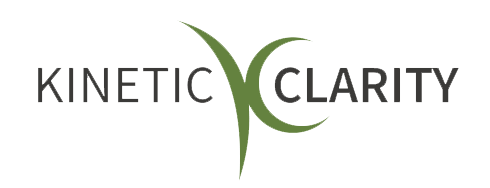Unlocking Insights: The Power and Benefits of Employee Surveys
When it comes to human resources, understanding your workforce is paramount.

Employee surveys are a powerful tool that provides the insights needed to build a positive work environment, drive engagement, and enhance overall organizational performance. Let’s explore the benefits of employee surveys and the different types of surveys you can use to gather meaningful data.
The Benefits of Employee Surveys
Employee surveys offer invaluable insights into employee satisfaction, organizational culture, and areas needing improvement. They enable leaders to make informed decisions that transform the workplace, boost morale, and drive success.
One Gallup study found that organizations with highly engaged employees see a 21% increase in productivity. A more recent study by Management Science reinforces this finding stating that happy employees produce up to 20% more than unhappy ones.
Enhancing Employee Engagement
Employee surveys give your workforce a voice, allowing them to express their thoughts, concerns, and suggestions. This sense of inclusion and involvement can significantly boost employee engagement. When employees feel heard, they’re more likely to be committed and motivated, driving productivity and job satisfaction.
Identifying Areas for Improvement
Surveys highlight areas that need attention, whether it’s workplace culture, management practices, or specific processes. By identifying these pain points, you can implement targeted interventions to address issues before they escalate, leading to a healthier and more efficient workplace.
Measuring Employee Satisfaction
Employee satisfaction surveys can reduce turnover by as much as 20% (SHRM). Understanding how happy your employees are with various aspects of their jobs—from work-life balance to compensation and benefits—can help you make informed decisions that enhance job satisfaction. High levels of employee satisfaction are often linked to lower turnover rates and improved morale.
Facilitating Open Communication
Regularly conducting surveys fosters a culture of open communication. Employees are more likely to share honest feedback when they see that their input leads to real changes. This transparency builds trust and strengthens the relationship between employees and management. SHRM also notes that companies with high levels of communication transparency see a 30% increase in employee engagement.
Supporting Strategic Planning
The data gathered from employee surveys can inform your strategic planning. By understanding the workforce’s needs and sentiments, you can align HR initiatives with the company’s strategic goals, ensuring that your policies and practices support overall business objectives.
Types of Employee Surveys
There are various types of employee surveys, each designed to capture specific information. Here’s a look at some of the most commonly used surveys and their purposes:
Measure employee commitment.
Employee engagement surveys measure employees' engagement and commitment towards their work and the organization. Questions typically cover areas such as job satisfaction, alignment with company values, and perceptions of leadership.
The goal is to identify factors influencing engagement and develop strategies to enhance it. Gallup reports that companies with highly engaged teams experience a 41% reduction in absenteeism.
Gauge employees’ satisfaction.
Employee satisfaction surveys focus on gauging employees' satisfaction with their roles, work environment, compensation, benefits, and other job-related factors. These surveys help identify what employees value most and areas where improvements can be made to increase satisfaction.
Gain real-time insight into employee sentiments.
Pulse surveys are short and frequent. They’re ideal for quickly assessing reactions to recent changes, ongoing projects, or current events within the organization. Their brevity and frequency make them a valuable tool for maintaining a continuous feedback loop.
Collect employee performance feedback.
360-degree feedback surveys collect feedback about an employee from their peers, subordinates, and supervisors. The comprehensive nature of 360-degree feedback provides a well-rounded view of an employee’s performance and areas for development.
It’s particularly useful for leadership development and performance evaluations. According to The Leadership Circle, high scores in their 360-degree feedback correlate with high levels of leadership effectiveness and business performance.
Refine your onboarding process.
Administered to new hires, onboarding surveys capture their initial experiences and impressions of the organization. This feedback helps refine the onboarding process, ensuring that new employees are integrated smoothly and effectively into the company culture.
Understand why employees leave.
Exit surveys are conducted when an employee is leaving the organization. The goal is to understand the reasons behind their departure. The insights gained can help identify patterns and areas where retention strategies need to be strengthened.
Learn how employees understand the organization’s structure.
Culture surveys help you assess employees’ perceptions of the organizational culture. These surveys can reveal whether the company’s values, norms, and practices are aligned with employees’ expectations and experiences. Understanding the cultural climate can guide initiatives to strengthen or shift the company culture as needed.
Best Practices for Conducting Employee Surveys
To maximize the benefits of employee surveys, it’s essential to follow best practices:
- Ensure Anonymity and Confidentiality: Employees should feel safe to provide honest feedback without fear of repercussions. Ensuring anonymity and confidentiality encourages more candid responses.
- Communicate the Purpose and Benefits: Clearly communicate the purpose of the survey and how the results will be used. When employees understand the value of their input, they are more likely to participate and provide thoughtful feedback.
- Act on the Feedback: One of the most critical aspects of conducting surveys is acting on the feedback received. Demonstrate to employees that their input is valued by implementing changes and improvements based on survey results. This follow-through builds trust and reinforces the importance of their participation.
- Use a Mix of Question Types: Use a combination of quantitative (e.g., rating scales) and qualitative (e.g., open-ended) questions to capture a comprehensive view of employee sentiments. Quantitative data provides measurable insights, while qualitative data offers deeper context.
- Regularly Review and Update Surveys: Ensure your surveys remain relevant by regularly reviewing and updating the questions. This helps keep the surveys aligned with current organizational priorities and employee concerns.
Wrapping It Up
Employee surveys are a valuable tool for unlocking insights to drive meaningful organizational change. By understanding the various types of surveys and their benefits, you can strategically gather and utilize employee feedback to enhance engagement, satisfaction, and overall performance. Remember, the key to successful employee surveys lies in collecting data and acting upon it to create a better workplace for all.
As a human resource leader, harnessing the power of employee surveys positions you to make informed decisions that propel your organization forward. Embrace this tool, watch as it transforms your workforce, and pave the way for sustained success.
If you’re ready to take your employee engagement and organizational performance to the next level, start by implementing a robust employee survey strategy. For further guidance or to discuss tailored solutions for your organization, feel free to reach out.
Contact us to talk about your executive coaching needs.
We will get back to you as soon as possible.
Please try again later.
Kinetic Clarity | All Rights Reserved |
Created by Olive + Ash.
Managed by Olive Street Design.












